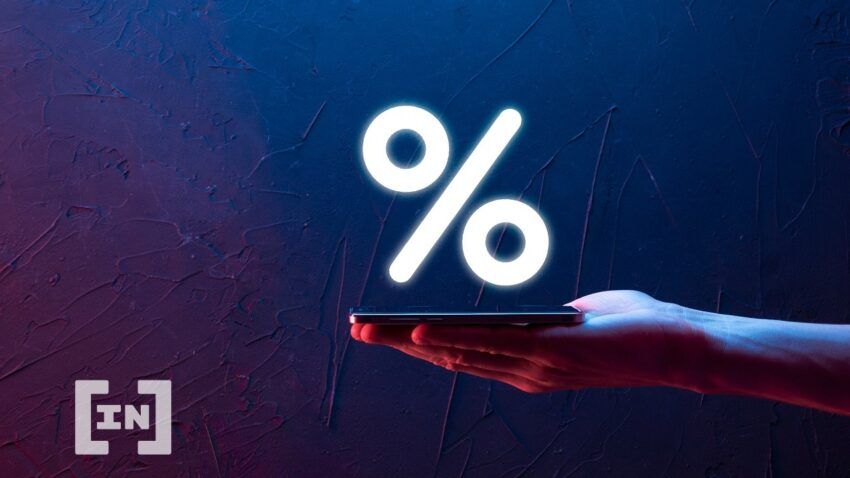There are many ways to stake on the Ethereum network, and one of them is Lido ETH staking. Doing so lets you earn rewards without having to worry about the limitation imposed by validators.
Lido ETH staking is really that easy and is accessible to anyone with a private crypto wallet and some ethereum. It doesn’t take much to get started, though you should know about how Lido works and what the process is like.
Let’s dive in and learn how to stake ETH with Lido.
In this guide:
Ethereum staking

Staking refers to the act of holding funds in crypto wallets to support the operation of a blockchain network. Holders, who are also referred to as the stakers, are then rewarded for their effort. Staking is a process available only on proof-of-stake (PoS) blockchains.
Ethereum is one of the first programmable blockchains, which allows the deployment of decentralized games, financial services, and applications via its smart contract capabilities. Over the last years, Ethereum has experienced tremendous growth, but this has also proven some limitations of the network. That’s why Ethereum is in the process of transitioning from a proof-of-work (PoW) to a proof-of-stake (PoS) network, to improve its security and scalability. Ethereum 2.0 is expected to be fully deployed by the end of 2022, and it will rely on validators staking their ETH and help secure the network in exchange for rewards.
What is Lido?

Lido is a liquid staking platform based on the Ethereum blockchain. It is supported by top blockchain staking providers.
Normally, you would need 32 ETH to become an Ethereum validator on the ETH 2.0 Beacon Chain, or you could also choose to participate in different staking pools for a fee. However, Lido allows you to stake any amount of ethereum (ETH) without the need for complex infrastructure. The novelty that Lido brings is that you can also deploy your staked Ethereum across DeFi apps. Stakers no longer have to choose between participating in DeFi or staking Ethereum.
Lido pools all the deposited ethereum (ETH) from users. In exchange for their ETH deposits, users receive stETH, the native asset. The protocol stakes the ETH through a trusted group of node operators on ETH 2.0. Lido is then rewarded for staking Ethereum stakes. These rewards are then shared among investors.
Lido’s goal is to eliminate a variety of problems that come with staking Ethereum and to reduce illiquidity and immovability. Simply put, Lido allows you to stake Ethereum at any amount, any time, without worrying about a lock-up.
How does Lido work?
Users can use Lido to stake ether (ETH) and receive their staking rewards for helping secure the Ethereum blockchain.
Stakers receive stETH to represent the amount of ETH staked at a 1:1 ratio. The advantage is that you can then use stETH in the same way you would use regular ETH. The staking rewards are received daily and there is no minimum deposit or lock-up periods for staking on Lido.
Staking ETH on Lido allows users to participate in the security of Ethereum without taking on any downside risks.
The APY (Annual Percentage Yield) for the staked ETH depends on the total amount of staked ETH on the network. As the staked ETH increases, the APY decreases. Users of the Lido protocol can always see the current APY in the app, but it is worth mentioning that the APY is subject to frequent change.
Users should also know that Lido will apply a 10% fee for the yield you get, which will be already deducted from your rewards. The protocol is using pooling to transfer the liquidity from L1 to L2 and that will also incur a small gar fee for your part of the share of the transaction.
Features of Lido
Lido is the solution for those who want a flexible and effective way to stake their ether (ETH). It also contributes to the decentralization benefits of the Ethereum network. What sets Lido apart from other protocols is its liquid staking feature and the governing DAO.
Users can earn liquid staking rewards by using liquid staking protocols, which means that you don’t need to lock assets or maintain a staking infrastructure. After you deposit your tokens, you will receive liquid tokens in return. These tokens are staked by the DAO-controlled smart contracts using an elected staking provider. The staking providers don’t have access to the assets provided by users, since these are managed by the Lido DAO.
What are the benefits of staking with Lido?

Lido allows users to stake their ETH, without having to give the option to interact with DeFi apps.
As a liquid staking non-custodial protocol, Lido allows users to keep complete control over their staked assets. The protocol offers significantly more flexibility than self staking.
Users choosing to stake with Lido have a bunch of benefits, such as:
- Earn staking rewards, without having to lock up tokens.
- Users earn rewards every 24 hours.
- Users can stake as little as they want and earn the corresponding rewards. You don’t need to stake 32 ethereum.
- Reduce the risk of losing staked cryptocurrency through software failures.
- Develop stETH to be used in the DeFi space (can be used as collateral for DeFi loans, or for yield farming on Curve Finance).
- Offers an alternative to self-staking and exchange staking, while still benefiting the Ethereum network.
What are the risks of staking with Lido?
Although Ethereum 2.0 has many supporters, there is always the possibility that it might not be implemented according to the official roadmap or face additional delays.
There are also risks associated with using smart contracts. This means that any decentralized protocol built on Ethereum or another smart-contract network could be vulnerable to security risks such as hacks and self-inflicted failures.
As a result, DeFi platforms such as Lido are particularly vulnerable to security threats. These platforms offer exit transactions that, in some instances, can be triggered by permissionless means to their users. This allows them to close down validators and take them under their control. However, Lido has been audited by industry leaders in blockchain security such as Quantstamp, MixBytes, and Sigmaprime.
You should always do your research on all cryptocurrencies you invest in and DeFi apps that you intend to use. The research should include smart contract vulnerabilities as well as the economics of the protocols.
How to stake Ethereum (ETH) with Lido
Ethereum holders can start staking ethereum (ETH) on the Lido protocol in only a few simple steps. Unlike other protocols, it allows users to unstake their tokens at any time, as there is no penalty fee and no locked down period. Rewards are awarded every 24 hours, according to the current APY.
Let’s see how you can stake ethereum with Lido.
Step 1. Connect your wallet to the Lido app
Go to stake.lido.fi and connect your wallet to the Lido app. To do so, simply click on the “Connect wallet” button from under the Stake Ether amount or use the bottom on the top right.
You will have to accept the terms and conditions and then select the wallet you want to connect to the Lido protocol.
Note that you can select any of the supported wallets, and you will need to have an ETH balance on that wallet. After you select your wallet from the list of supported wallets, you will have to confirm the connection to the Lido app from your wallet.
Step 2. Select the amount of ETH to stake
After you have connected your wallet to the Lido ETH staking app, the app will display your total available ETH for staking. Note that the Lido app will also show you the current APY rate and all the details corresponding to your transaction, as well as the amount of stETH tokens you will receive.
To stake ethereum with Lido, select the amount of ETH to stake and click on submit. Note that you will need to keep some ETH in your wallet to pay for the transaction fees.
Note that there is a disclaimer regarding the 10% reward fee, which will be applied to the rewards earned and not your deposited amount.
Step 3. Confirm the transaction from your wallet
Your wallet will ask you to confirm the transaction. In this case, we are using MetaMask and you will see all the details of the transaction in your wallet. Click on “Confirm” after you review all the details.
Congrats! This is how you stake ETH with Lido. Remember that you can unstake your ETH at any time. Meanwhile, you can use your stETH in the DeFi space. For instance, you can buy stETH on DEXs such as 1Inch and then unstake it using Lido. The possibilities are truly endless.
What is stETH?
Lido is a liquid staking solution on Ethereum, and it makes staked ETH liquid, while allowing users to stake any amount of ETH. Whenever someone stakes ETH with Lido, the protocol will issue a stETH, the tokenized form of staked Ether, on a 1:1 ratio.
stETH combines your initial staking deposit and the daily staking rewards. Your stETH balance is updated daily at 12 pm UTC to reflect earned stake rewards. The update takes place via token supply rebase.
Lido’s stETH token can be used in the same way as ether (ETH). Holders will also be able to earn rewards through integrated platforms such Curve or SushiSwap, use it as collateral for DeFi lending, sell their stETH tokens or convert them back to ether (ETH). The supply of stETH represents the total amount of ETH that has been deposited into the Lido contract. At any given time, users can check the total supply of staked ethereum tokens (stETH) on Etherscan.
Lido DAO and the LDO token
The Lido DAO manages the Lido staking protocol. DAO stands for decentralized autonomous organization, and it represents the community that develops the tools and services necessary to stake Ethereum. The members of the Lido DAO oversee the growth and development of the Lido protocol.
The Lido DAO is responsible for the technical development of the platform. It also promotes Lido and recruits users, validators, and node operators through educational content, protocol promotion, and other activities.
The LDO token is the Lido DAO governance token, and it is responsible for the decentralized ownership of Lido. It also enables holders to vote on the DAO’s governance decisions.
LDO holders can vote on any decision that will affect the future of the platform. The amount of LDO they stake determines their voting power. LDO tokens can also be used to manage fee parameters and add or remove nodes from the network.
LDO tokenomics

The total number of LDO tokens is distributed to the Lido DAO community as follows:
- DAO Treasury: 36.32%
- Initial Lido Developers: 20%
- Investors: 22.18%
- Founders and Future Employees: 15%
- Validators and Signature Holders: 6.5%
At the moment of writing, the LDO token is trading at around $1.44. There are a total of 1 billion LDO available, and over 312 million are currently in circulation.
Is Lido staking a lucrative option?
Staking ETH with Lido can be a convenient way to stake on the Ethereum 2.0 network. It gives you a good head start on staking, and you’ll put your ETH to use. It’s far more accessible to beginners, and you get rewarded with Lido as well.
There are multiple ways to generate passive income in crypto, and Lido ETH staking might be one you’d like if you also want to contribute to Ethereum. After all, you don’t worry about having your ETH locked up. You can claim your cryptocurrency anytime without it being locked up for one year, as is the case with other staking protocols.
Frequently asked questions
Should I stake ETH on Lido?
Can you stake Lido?
Can you stake Lido token?
How does Lido finance make money?
Is Lido a DeFi?
Is Lido audited?
What can I do with Lido staked ETH?
How do you stake an ETH with Lido?
Is staking your ETH a good idea?
Disclaimer
In line with the Trust Project guidelines, the educational content on this website is offered in good faith and for general information purposes only. BeInCrypto prioritizes providing high-quality information, taking the time to research and create informative content for readers. While partners may reward the company with commissions for placements in articles, these commissions do not influence the unbiased, honest, and helpful content creation process. Any action taken by the reader based on this information is strictly at their own risk. Please note that our Terms and Conditions, Privacy Policy, and Disclaimers have been updated.




